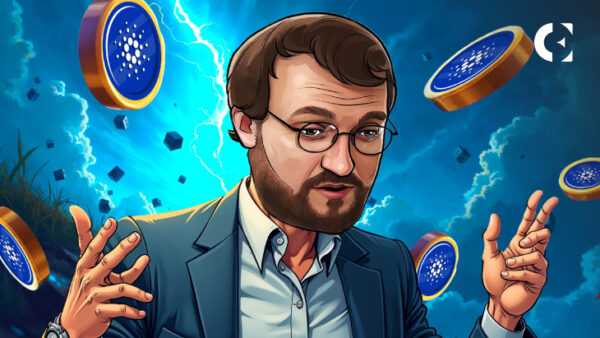- Cardano transitions from formal-only development to a faster, open ecosystem.
- Hoskinson ends contracts to eliminate delays and hit the 2026 Leios deadline.
- Community sees faster progress in scalability, governance, and interoperability.
Cardano founder Charles Hoskinson has announced a shift in the project’s development model for 2025. This new approach introduces agile engineering teams, primarily to achieve faster execution of Cardano’s development goals. A key milestone for these teams is the delivery of the Ouroboros Leios protocol, now targeted for 2026.
Cardano Development: From Academic Rigor to Agile Execution
Since its inception, Cardano has followed a formal methods approach, prioritizing safety and academic rigor. While this strategy ensured high standards in code quality and network stability, it came at the cost of slower feature rollouts and limited community involvement.
Related: Cardano Makes Big Leap as Bitcoin Moves Cross-Chain Without Bridge
In his tweet, Hoskinson admitted that the early model, although effective for secure development, isolated contributors and slowed Cardano’s growth. Hoskinson explained that the original development team didn’t want deadlines, prioritized ideal practices, and took a long-term view, often thinking about years or decades.
While this approach helped Cardano maintain strong security standards during widespread unsafe development in the industry, it also slowed progress and limited the project’s ability to grow and adapt.
Cardano’s New Structure: Independent Teams to Boost Innovation
Cardano now brings in smaller, independent development teams. This structural change aims to improve delivery speed and encourage more diverse contributions to the ecosystem. Groups like Aiken and Midgard are contributing to the ecosystem alongside IOG’s formal methods group, which continues to use Agda for secure implementations.
This multi-client and multi-team strategy allows competing ideas and designs to coexist, providing flexibility for new protocols and use cases. “We are opening up the ecosystem,” Hoskinson said, “augmented with small agile teams… while preserving the knowledge and rigor of our formal methods.”
Ouroboros Leios: 2026 Target Drives Cardano’s Renewed Urgency
In response to community concerns about the termination of key team contracts, Hoskinson offered a direct explanation. “Because I want Leios in 2026, not 2028,” he said. “No more games or delays. Cardano needs to get to the next level.”
Notably, Ouroboros Leios is a key scalability upgrade expected to significantly enhance transaction throughput and network efficiency.
Cardano Community Applauds Shift to Faster Development
Cardano community members have responded positively to the changes. A commenter, Hudhra Nomi, praised the progress made in areas like scalability (Leios, Hydra), interoperability (IBC, Bitcoin integrations), and governance (Chang upgrade, New Constitutional Layer). “I think we’re moving much faster than before,” he said.
Related: Top Analyst Says Cardano Is Heading in the Right Direction, Shares Next Likely Breakout Target
Another community member echoed this sentiment, saying, “Decentralization thrives when competition and collaboration meet. These new teams are the fuel.”
Disclaimer: The information presented in this article is for informational and educational purposes only. The article does not constitute financial advice or advice of any kind. Coin Edition is not responsible for any losses incurred as a result of the utilization of content, products, or services mentioned. Readers are advised to exercise caution before taking any action related to the company.









